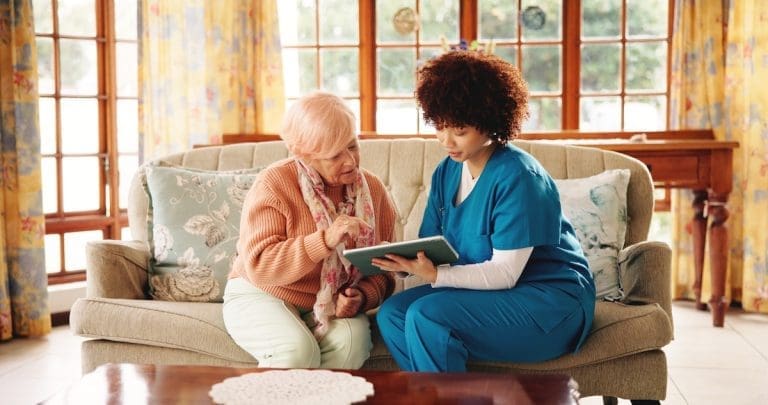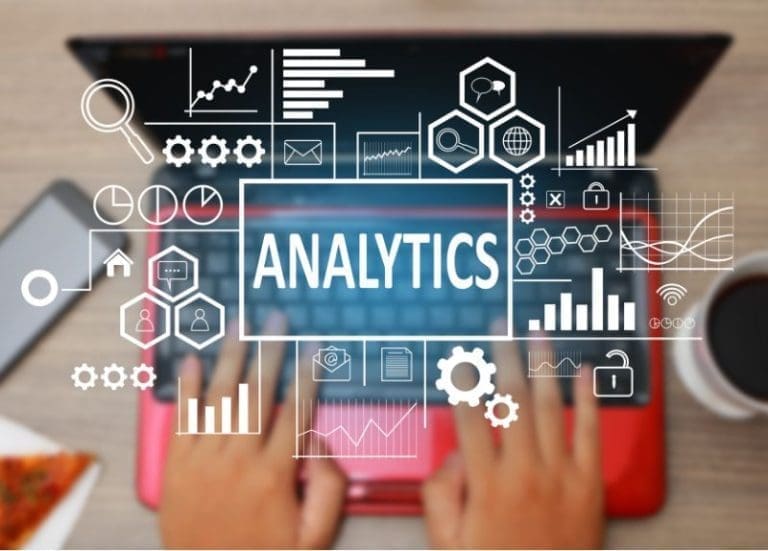As senior living communities continue to face staffing shortages, resident safety concerns, and increased competition with at-home care options, embracing new technologies can increase resident move-ins while decreasing caregiver turnover. Simply put, communities that do not embrace technology will be left behind as more residents and staff embrace technology.
By updating your technology, you can give your residents a better sense of connection and independence, as well as help your staff provide better care. “Technology that assists staff and offers actionable data, improves the resident experience and makes the staff more efficient in the delivery of care,” said John Sanfilippo, a registered nurse, and VP of Sales for Sentrics in a recent interview with Senior Housing News.
Technology helps caregivers work with higher-acuity patients
Seniors are staying in their homes longer. When they join senior living communities, they are older and have more co-morbidities. That trend will continue. By 2034, the 65+ population will outnumber children for the first time in U.S. history, according to the U.S Census Bureau. And by 2060, twenty-five percent of Americans will be 65 years or older. Life expectancies in the U.S. are also rising, growing from 76.9 in 2000 to 79.05 today and 83.32 by 2050. With that increase, acuity levels of incoming residents in both independent living communities and assisted living facilities are also increasing.
“The typical resident coming into the community today has more comorbidities and is typically older,” says Sanfilippo. “Technology helps staff manage the care challenges these residents present in a faster, more efficient manner. Caregivers can now be more mobile and still access critical information at their fingertips from anywhere in the community. This is key to allowing your staff to be more accurate and more reliable. From allergies and medications to fall risk and DNR status, caregivers need quick access to information. Using technology, staff can also monitor subtle health changes and receive an alert in time to administer preventative care or minimize adverse events. By incorporating technology into care, we can ensure the best possible outcomes for our residents.”
Additionally, caregivers view organizations’ willingness to upgrade their technology as an investment in their work and support for their daily routines. Slow, outdated technology that doesn’t work in the right situation can be frustrating. By removing this frustration, your caregivers will be able to provide better care to your residents. In addition, caregivers may perceive a lack of investment in new technology as a blocker to providing better care.
New technology allows for new care options
Many communities employ a medical director who is in charge of resident health and wellbeing. However, these directors aren’t always available. As a result, virtual care is becoming more popular in the senior living industry. Telehealth can help fill those gaps, especially on nights and weekends when the only option for residents to receive care has been the ED. The technology can also help caregivers connect with physicians while the patient is “present,” to capture and report vital signs and inform medical decisions before emergency services are called.
Further, Real-Time Location Services (RTLS) provides staff with several benefits, such as letting staff know when residents loiter near doors (or other unrestricted areas) or alerting staff when two people are together who shouldn’t be. It’s not just about dots on a screen anymore; sophisticated RTLS technology can sound an alarm when a resident becomes separated from a walker or other medical device that the resident may need. When integrated with unique camera technology, RTLS can also help detect when a “known wanderer” has walked through an exit and alert staff quickly.
COVID may be more manageable today but knowing who has been exposed to it-or other infectious conditions-within minutes helps minimize the spread. RTLS-based solutions that leverage automated contact tracing, protocol-based care management and geofencing (of an apartment, wing or person) can reduce the impact and risk of any contagion. Caregivers can use this same RTLS-based eCall technology to set occupancy limits on community rooms to prevent overcrowding.
Technology can help systems work together, not against each other
It is common for communities to use EMR and eCall technology side-by-side, however, without the proper integration, these technologies can actually work against each other. “Traditionally, communities work with multiple technologies,” Sanfilippo says. “They might have one system for life safety and another for electronic medical records. Traditionally, these systems don’t share information, and communities are not staffed to ‘fetch’ data. This leaves caregivers searching for answers in different systems, or worse, seeing an incomplete picture of a resident’s health.”
Using an eCall system that is pre-integrated with an EMR, empowers caregivers with the information they need to make quick decisions. “When technologies fight for footprint, they can have a negative impact on communities,” he says. “What if it didn’t have to be that way? What if these two systems shared data in a safe way? What if a single sign-in gave caregivers access to relevant EMR and resident safety information? It creates a whole new level of empowerment for an overworked, often underpaid workforce. That is what we want: An empowered, informed workforce, especially when trying to overcome the challenge of finding and retaining staff.”
Ensure360℠ a proven solution with powerful new technology
Ensure360 combines RTLS technology, contact tracing and case management with the industry’s best nurse call systems, to collect and analyze data on the resident, community, and caregiver conditions. It includes sophisticated data-capture and analytics technology to provide staff with the insights they need to optimize their processes, reduce costs, and improve senior living and healthcare outcomes. Ensure360 is part of an integrated suite that gives communities a 360-view of a resident’s physical, medical, social and behavioral needs to improve outcomes, reduce risk and provide a better experience. To find out more, click HERE or call (888) 988-8210.



